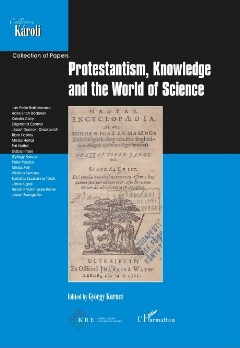Page 193 [193]
THE INTELLECTUAL RESOURCES OF MODERN GOVERNANCE
of the sciences of state in SArospatak, and Valerian Raméczy (1807-1864), pro¬
fessor at the law academy of Gyér.”°
In this literature, the comprehensive description of the benevolent state
and its spheres of activity included Land und Leute, that is, the material and
intellectual wealth of the country, but also the workings of the state adminis¬
tration and the laws governing the country. These names are representatives
of numerous authors of Staatenkunde (text-)books, whose publication started
in the late 1790s and continued until as late as the 1850s.*° This state-centric
approach that proceeded via the method of describing was in a sharp contrast
with the society-centered perspective of Sinclair, and also with the quantita¬
tive Napoleonic statistics. The conceptual identification of state and society
corresponded well with the absolutist vision of an immobile political and so¬
cial order, and continued to be a shared feature of the German, Austrian and
Hungarian Staatenkunde, from Schlözer through Niemann and their Hungar¬
ian adepts. It lasted until the establishment ofthe Liberal era, signalled by the
institutions of nationally organized statistical bureaux.”’
The “unit of analysis” that is, the smallest item described by Staatenkunde,
was called Staatsmerkwürdigkeit (meaning “state peculiarity”). The term was
introduced by Hermann Conring (1606-1681) and his works written in Latin
were translated into German by Achenwall. The notion of Staatsmerkwiirdigkeit
designated data that were relevant for the general welfare, as well as the cause of
this relevance.”® Achenwall himself found this notion very broad and prompted
his readers to concentrate on the most important factors “ohne welche die
ware Einrichtung, Stärke oder Schwäche eines Staats nicht begriffen werden
kann.””? The wealth of such items and occurrances (“Begebenheiten”) had to be
delimited and spread out conveniently before the reader. Their change in time
was supposed to show the main changes that took place in the life of an empire
and indeed, the historical dimension of Staatenkunde played an important role
since Achenwall. Ihe most important state peculiarities included, again, the
population, and the items of economic production — the so-called material
cause of the state (more about the structure of Staatenkunde below):
25 RAMÓCZY, Valerián, Álladalomtan, vol. 1, Pozsony, Bucsanszky, 1847, 1-4.; SZEREMLEY, Gabor,
Politica, Sarospatak, Nadaskay, 1844, 3-7.
26 KONEK, Sandor, A statistika elmelete, Györ, 1847.; Id., Elméleti fejtegetések a statistika terén, 2
vols, Pest, Heckenast, 1855.
27 KONEK, A statistika, 18-20.
ACHENWALL, Gottfried, Staatsverfassung der heutigen vornehmsten Reiche in Grundrisse, Göt¬
tingen, Vandenhoeck, 1762, 3rd ed., 4.
2 Ibid. 5.
+ 191 +

